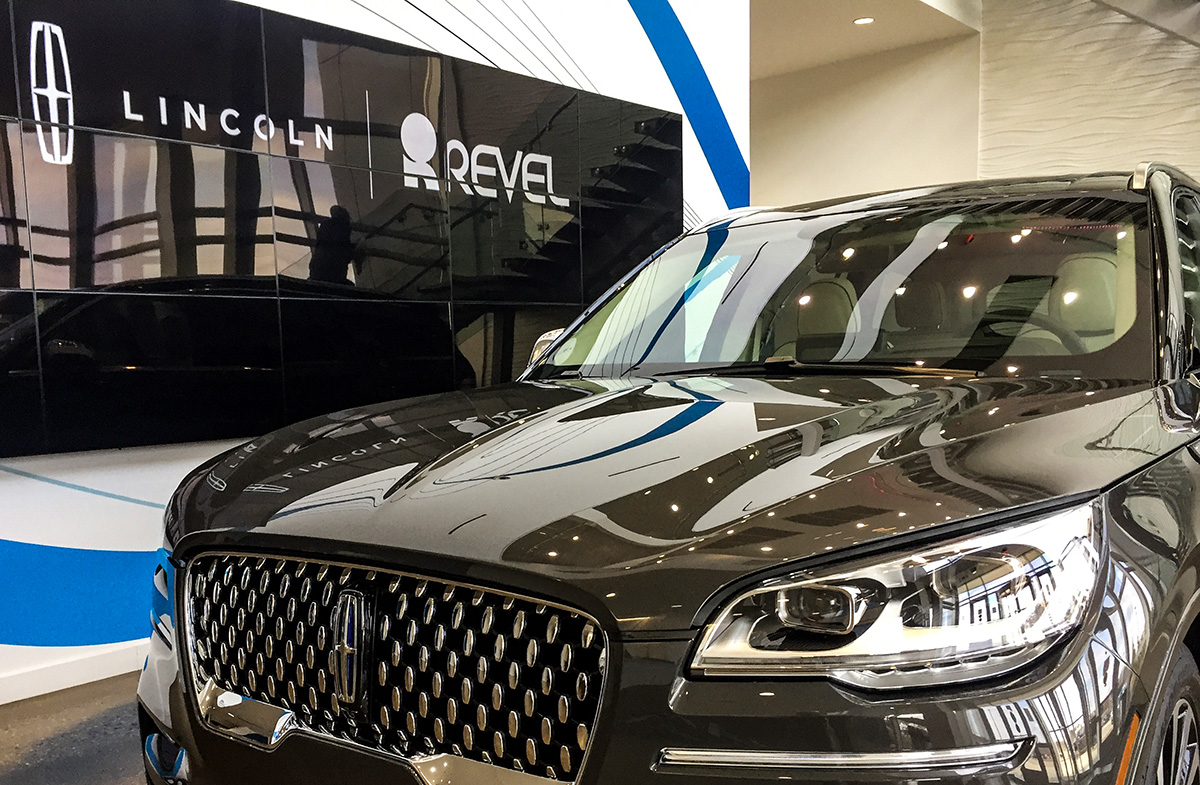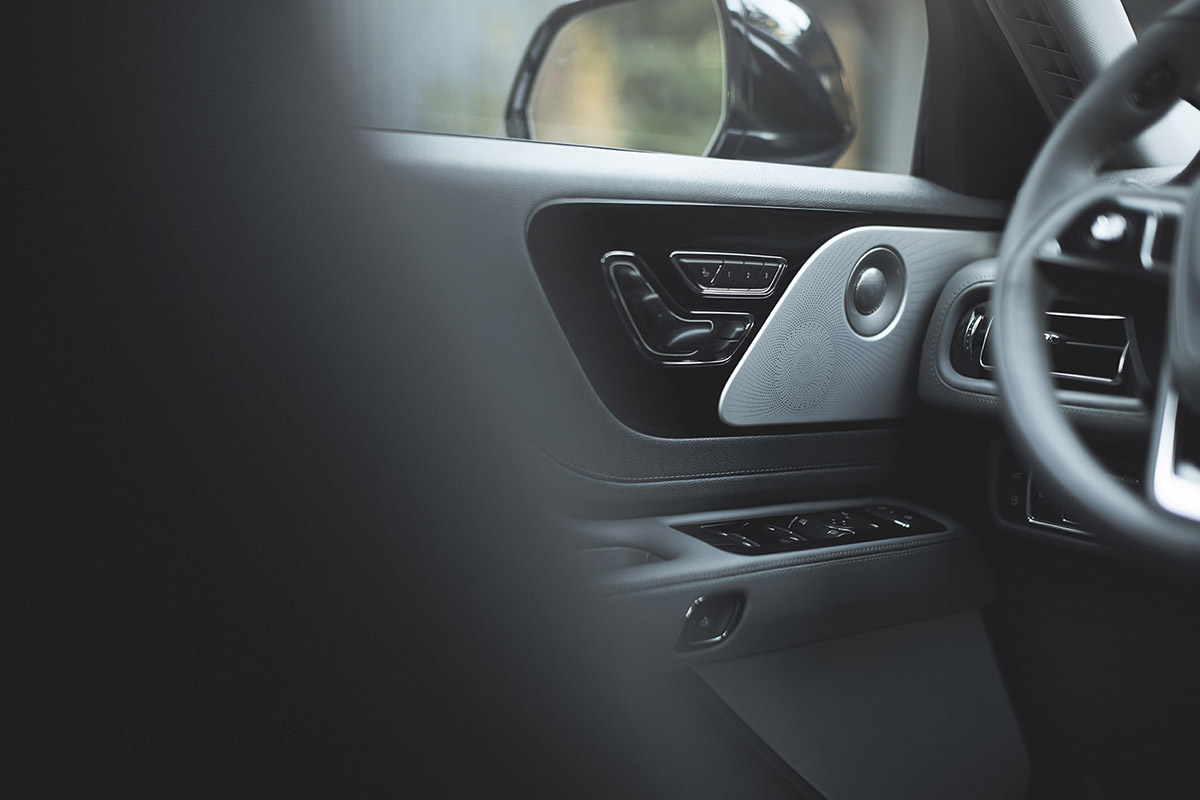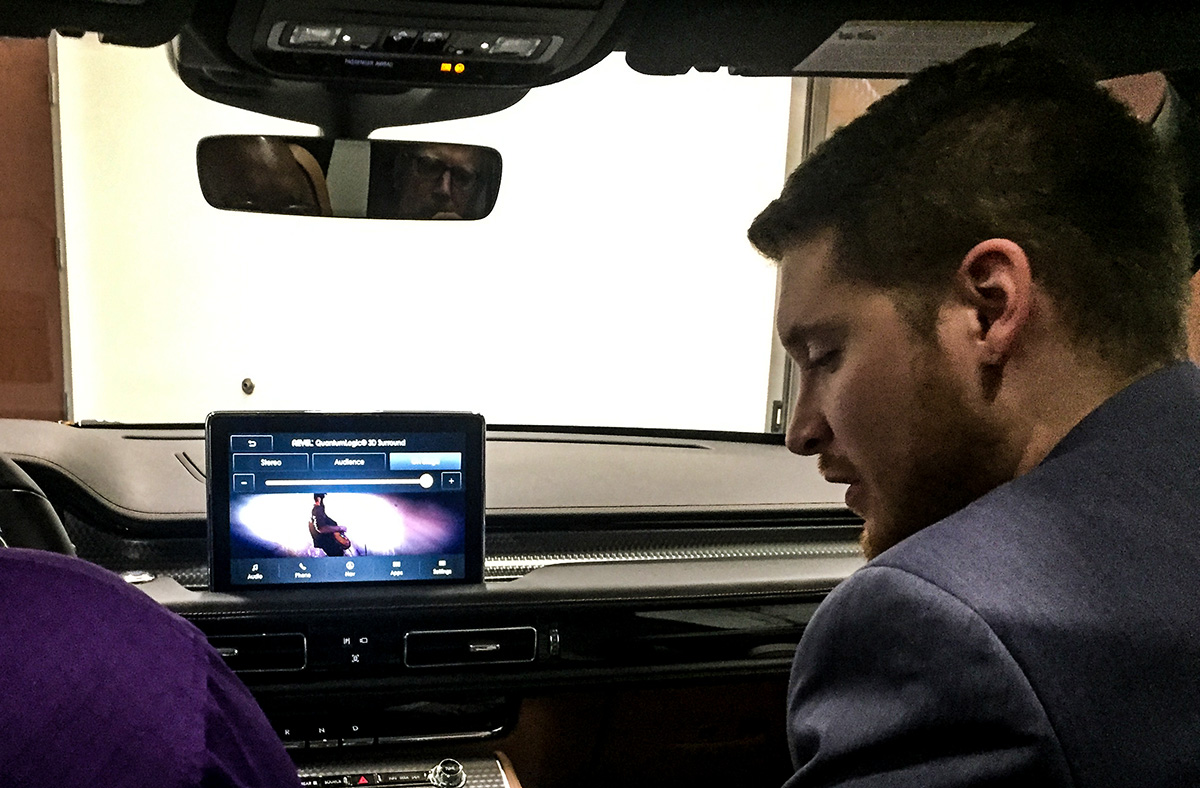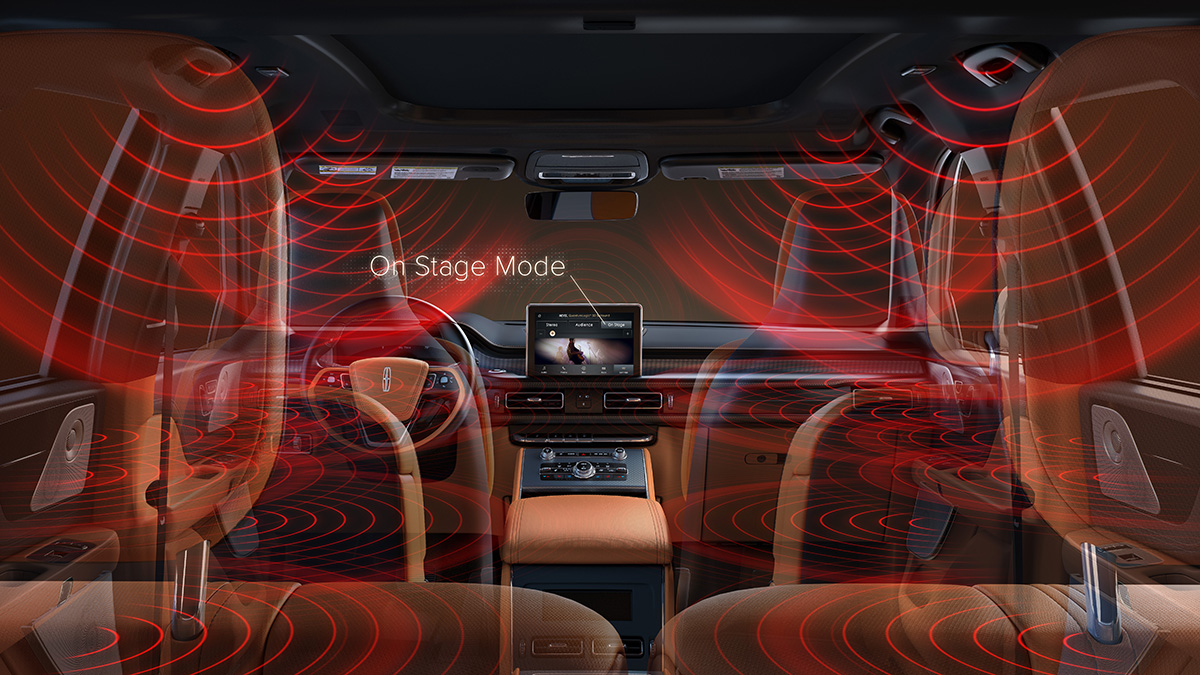With Aviator, Lincoln and Revel Take Sound to Another Dimension

Sitting in the perfect position seat behind the wheel of the new Lincoln Aviator inside a sound lab in the Detroit headquarters of Harman International, I plugged my iPhone into the USB port and scrolled through my music looking for the perfect song when I came across this.
After the power chord intro, Duane’s slide guitar soared to the right of me, Clapton’s laid back counter-lead to my left, the base and drums anchoring the tune behind me. When I closed my eyes to experience the sound in full, imaging myself in the studio for this legendary session, I could almost smell the tumblers of whiskey and see lines of coke on a glass-topped coffee table. As Clapton’s vocals kicked in I could hear him standing before me with Bobby Whitlock belting out the high harmonies just to his right singing Jimi Hendrix’s mystical lyrics.
Well she’s walking through the clouds
With a circus mind that’s running round
Butterflies and zebras and fairy tales
That’s all she ever thinks about
I was completely enveloped in the sound, never having heard Derek and the Dominos rendition of Little Wing with such detail, clarity, and presence. Just 90 seconds into the track, it was apparent the Revel Ultima 3D sound system had set a new standard in in-car audio.

It’s not just more speakers – there are 28 of them throughout the Aviator – nor the 20 Channel Hybrid Class D-Class A/B Amplifier. Lincoln and their audio partner Revel Speakers started designing the Aviator’s audio system at the very conception of the upcoming luxury midsize SUV.
Because vehicle integrity is a crucial element of car audio design, Revel engineers worked with Lincoln’s team to determine the perfect placement for the speakers early in the process, using computer-aided systems to develop the initial design which was tested, tweaked, and validated throughout the vehicle prototyping stages. Now that the Aviator is moving into final pre-production, engineers brought a few vehicles with different trim levels into the reference room in their Novi headquarters to do the final tuning before customer cars start rolling off the assembly line. That’s where I had the chance to play with, listen to, and learn about the added dimension Revel is bringing to the audio experience.
Revel like a lot of boutique manufacturers, grew out of a passion for audio quality and an idea when it was founded in 1996. They bill themselves as “Obsessed With Accuracy” and this informs everything they do both in their home speaker systems, which sell for as much as $20,000 a pair, and their in-vehicle audio partnership with Lincoln. They develop their systems to deliver the music as the artist intended. That means paying attention to the four aspects of sound: Spectrum, Dynamics, Integrity, and Space.

Spectrum is the frequency balance between treble, midrange, and bass. Some systems (I’m looking at you Beats) cheat toward either the bass or treble end of the spectrum. Revel’s system is designed to deliver the original mix as faithfully as possible. You can, of course, adjust the balance to your liking.
Dynamics is about volume and clarity, two items that are tough to balance. It’s easy to make music loud, add more power. The challenge comes in eliminating distortion as the speakers get pushed to their limits. When you play music quietly, keeping the original mix becomes difficult as it’s hard to maintain balance, especially delivering bass at low volumes. Revel’s point source architecture positions the mids and tweeters closer together so the sound reaches the listeners’ ears simultaneously regardless of volume.
Integrity is all about minimizing distortion, nuisance, and other variables. Revel’s Clari-Fi software scans the music source in real time, identifies elements lost due to compression of the digital file, and restores the missing information to deliver, richer, truer sound. Field balancing shorting rings increase the clarity and allow the speakers to deliver every detail of the song being played.

Space is where things get even more interesting now with their 28 speaker 3D system. Most sound systems allow you to balance the music from front to back and left to right. Revel adds another dimension of adjustment, top to bottom, by mounting four speakers in the Aviator’s roof. With the added speakers the Revel systems three listening modes offer even more expansive sound. By moving a digital slider on the touch screen, you adjust the system between traditional Stereo, Concert Hall, and On Stage mode. The first is as you would expect a system to sound. The second makes it seem as though your sitting in the best seat in the house in a theater like Carnegie Hall. The third, On Stage mode, is mind blowing, and the way I was listening to Derek and the Dominos.
On Stage mode puts you in the middle of the band by separating each instrument based on its digital signal and moving them to the appropriate place in the “room.” Typically guitars, keyboards, and horns are on one side of the stage or the other, the drums and bass at the center rear, and the lead vocalist out front. On Stage mode replicates this, and by dialing in more of the upper speakers, covers you with sound from head to toe. It can create true surround sound from just about any digital source.
While we’ll have to wait a few more months to drive the new Aviator, my 30 minutes spent in the car told me plenty about its comfort, quality, and of course the Revel Ultima 3D sound system, which is flat out one of the best in any vehicle I’ve experienced. If the rest of the car is as good, Lincoln has a winner on its hands.



